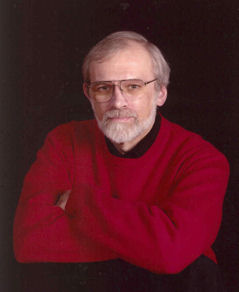Wednesday, Michigan Gov. Rick Snyder introduced a new transportation funding proposal. Little by little, details are coming out.
First, here are the main parts of the proposal as they were delivered Wednesday:
Remember that these are still proposals, and must be approved by the House and Senate, which will certainly have a lot to say about it...but here are some of the highlights:
The information we have raises a lot of questions as well. Mr. Schornack, when questioned about some of them, smiled and said the Governor preferred to start with the "10,000-ft. view" and work out the details later. What questions do you have? We may be able to get at least a few answers from the Governor at Monday's Michigan Rail Summit.
Meanwhile, I'm off the the Midwest Highspeed Rail Association's Fall meeting in Cleveland. I started this blog on the AATA bus coming home from the meeting, and I'm now on the Megabus en route from Toledo to Cleveland. (I had to try the Megabus service to see how public transportation that claim to make a profit actually feels to the consumer. More later...)
First, here are the main parts of the proposal as they were delivered Wednesday:
- Changing the way motor fuel is taxed from per-gallon paid at the pump by motorists, to a percentage of the price paid by wholesalers; the shift is to be "revenue neutral" when it kicks in, but will change as the price of oil fluctuates;
- Adding an additional registration fee for license plates;
- Allowing regions to add a further fee to license plates for regional transportation projects;
- Creating a regional transportation authority for Southeast Michigan that includes the City of Detroit, and the counties of Wayne, Oakland, Macomb, and Washtenaw.
Remember that these are still proposals, and must be approved by the House and Senate, which will certainly have a lot to say about it...but here are some of the highlights:
- The state-wide registration fee is to be based on the value of the vehicle, as the current fee is; it is advertized as "$10 per month", but that obviously adds up to $120 per year; that's said to be a maximum, so presumably people whose cars are worth less money would pay less than $120 for their registration;
- Any county or contiguous group of counties can propose a license fee of up to $40 per year; (that's $13.3333 per month); the amount would need to be approved by the majority of voters in the proposed region, with no "opt-out" provision for sub-regions that don't think they want to participate; in our case, that means the votes of everybody in Macomb, Oakland, Washtenaw, and Wayne counties, including the City of Detroit, would be tallied together - not as individual counties, and if the majority of voters in one county voted against it while the majority of the region voted in favor, they would still be subject to the tax;
- All the funds raised by either new fuel or new license fees would be subject to the Michigan constitutional requirement that 90% of all funds raised through vehicle and fuel taxes be allocated to roads and bridges, with a maximum of 10% going to transit;
- Funds raised by a regional registration fee would be limited in where they can go: 95% would be directed to the county in which they are raised; in other words, for every $1,000,000 Washtenaw County raises, it would be guaranteed at least $950,000 for its internal use, but the other $50,000 could be spent in another part of the region at the discrition of the regional authority;
- The Governor will recommend that the full 10% constitutionally allowable be used for transit, which is more than the amount currently allocated; using the example above, Washtenaw County would be able to use $100,000 for transit out of every $1,000,000 it raises through license fees;
- The regional transit authority for Southeast Michigan would be responsible for four proposed transit routes: Gatiot Avenue, Woodward Avenue, M-59, and Michigan Avenue to Detroit Metro Airport and Ann Arbor;
- Other public transit services in the area would be "contracted" to provide service, and would receive federal and state funds through the regional transit authority
- The committee setting up the regional authority for Southeast Michigan is composed of Governor Snyder, Mayor Dave Bing, andx Federal Transit Administrator Peter Rogoff; these would continue to serve as titular heads of the authority once it is set up, though of course others would carry out the day-to-day administration.
The information we have raises a lot of questions as well. Mr. Schornack, when questioned about some of them, smiled and said the Governor preferred to start with the "10,000-ft. view" and work out the details later. What questions do you have? We may be able to get at least a few answers from the Governor at Monday's Michigan Rail Summit.
Meanwhile, I'm off the the Midwest Highspeed Rail Association's Fall meeting in Cleveland. I started this blog on the AATA bus coming home from the meeting, and I'm now on the Megabus en route from Toledo to Cleveland. (I had to try the Megabus service to see how public transportation that claim to make a profit actually feels to the consumer. More later...)





